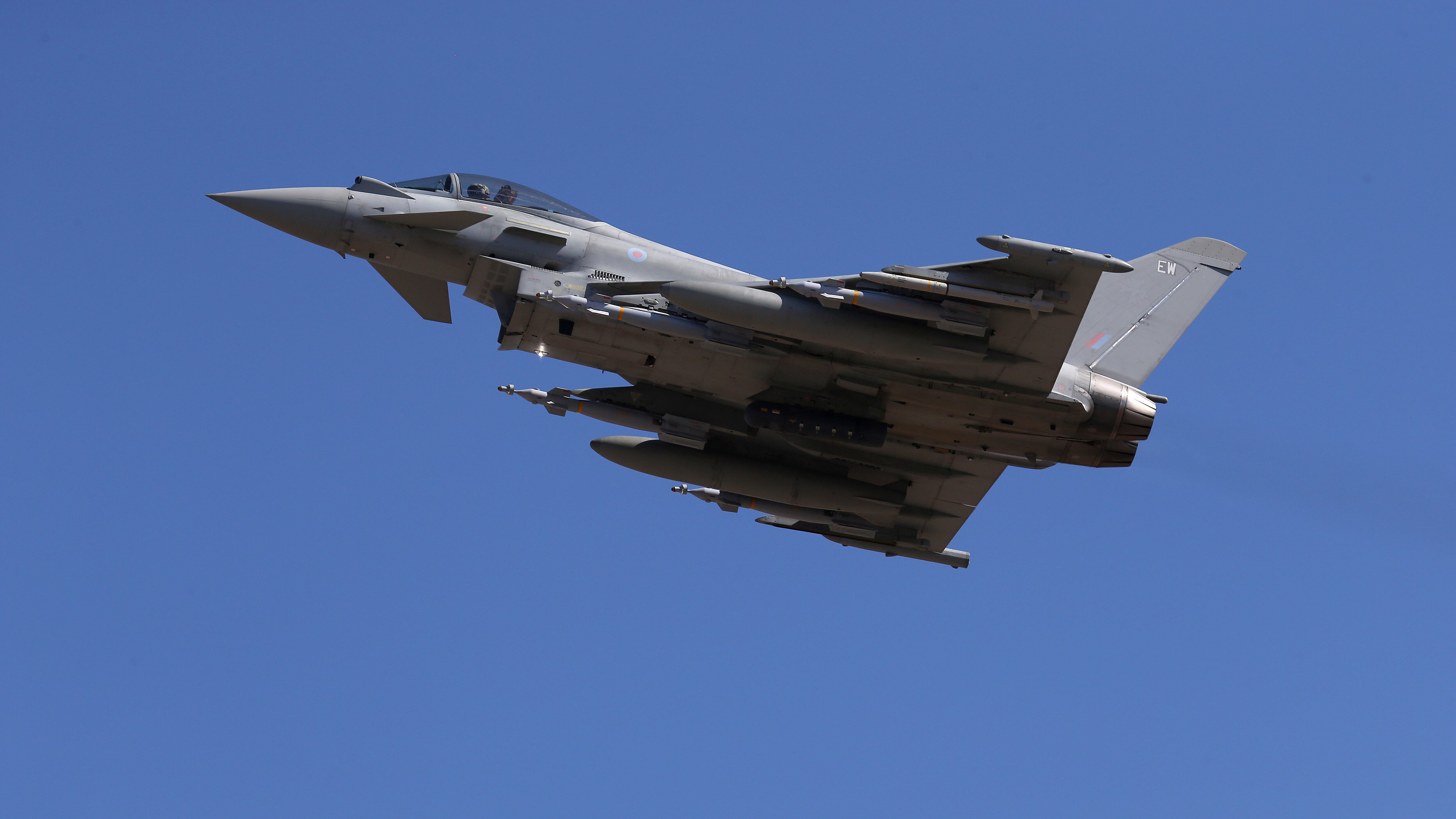WASHINGTON — The United Kingdom’s defense plans are at an inflection point. This September, a major government review will lay out its budget for the next several years. The government recently announced plans for a new littoral fleet, while also buying a series of expensive American-made airplanes. And looming above it all is the question of what the country will look like after it leaves the European Union.
During a recent visit to Washington, Defense News sat down with Gen. Gordon Messenger, vice chief of the Defence Staff, to discuss the Defence Ministry’s modernization strategy and how this will all work out post Brexit.
The U.K. has its regularly scheduled comprehensive spending review coming in the fall, which will set budgets for the next three years. How important is it that defense gets a favorable budget increase?
Well, we secured essentially £1.8 billion (U.S. $2.4 billion) in the autumn budget statement, and what that allowed us to do was to tackle some of the areas of underfunding, but critically it allowed us to free up some money for technological advancement and the pursuit of capabilities in certain areas. And it also allowed us to free up some money for what you could describe as “spend to save.” In other words, efficiency programs that need upfront investment, things that are almost certainly going to cost you in years one, two and three, but if you get them right and implement them right, you’ll save money in the latter years. We’re increasingly getting to a point where if you want to get after, you know, reasonably sized efficiencies, they almost all require some investment upfront, often in information systems that provide you with better management information.
We’re trying to review the acquisition process as a whole, but one of the key elements to that is to go narrow and deep into certain technological areas, and we’re calling them the “spearhead” programs. We’re picking areas that have the best technical potential for exploitation, but also areas that are of most importance to us. So the underwater battlespace would be one; faster and better network decision-making would be another, and there are three or four different programs that we’re driving through.
So in terms of the question about where that takes you, I think that clearly the larger the defense budget, the more one can spend in that high-end piece. But even with the defense budget as it now stands, we recognize that the modernization of defense and the need to be able to respond more agilely to technological advancement is a critical part of retaining your strategic edge as a military and therefore demands investment, and we’re putting money aside for that.
But is there a minimum pound increase you need to see? In the next few years you’re buying P-8s, E-7s and F-35s, as well as other high-priced gear. That’s not cheap.
There isn’t a fixed sum that anyone has in mind, and we absolutely recognize that the government’s got to balance many other priorities, too, not least health and social security and education and all those other departments that are making legitimate calls on the public purse. But no, we’ve — we’re in a much better place in understanding our budget and where the pressures are and in factoring those out over time. And, as you say, there is quite an ambitious capitalization program at the moment. I mean, the nuclear area, there’s huge capitalization in both the Dreadnought and the ongoing Astute submarine build, as well as warhead development.
The P-8, the E-7, the F-35, you will have seen, I hope, the announcements about future combat air. These are big commitments to modern capability that we’re determined to follow through, and we’re spending a lot of time on just making sure that that’s a realistic ambition over the 10 years based on a realistic understanding of how much money we’re going to get.
RELATED

There have been rumors about a new defense review that could happen later this year, different from the comprehensive spending review. Is that true?
No. You know, it will be almost impossible to have a spending review without some sort of look at the policy, but this is not going to be a big sort of [re-look].
Defence Secretary Gavin Williamson recently announced a plan to develop a new littoral fleet, but a lot of people looked at that and said it was thin on details. What’s the thinking and timetable here?
I think it will certainly be part of the debate in the spending review. At the moment, the money has been found to examine the concept and develop the concept, and I think until we have the information that that phase will bring, it’s very difficult to put a timeline or a sort of hard figure against it, and clearly that’s going to need to be weighed up against other priorities. But it’s a way of us understanding more about it. It’s a capability that is attractive, it’s a capability that we think will have relevance in the future. But until we really understand more about it, it’s difficult to weigh up against other priorities, and that’s why we’re spending a relatively small amount of money in developing the concept.
When do you think that study will be done? Do you expect you’ll need to invest in other areas, like escort or supply ships, to make this concept work?
I think a year from now.
[In terms of investments], it depends on your concept of operations. I mean, we’re investing in support ships anyway. We’ve got a brand-new class of refueler from South Korea, and we have budgeted and [are] yet to go to tender [on] solid support ships, which we think are going to be an important part of the carrier concept. So that’s where the munitions will be held, where the stores will be held. And, of course, those ships will be compatible not just with the carrier but with the other warships of the Royal Navy. So we’re investing quite a lot in support ships and then trying to work out what the best [concept of operations] is, given that we’re never going to have everything that we want because we’re simply not a nation of that sort of size.
RELATED

U.K. politicians have said that post Brexit, they intend to have a greater presence abroad. Do you have enough ships to do that?
Well, we have 19 destroyers and frigates. That is stated government policy. When the Type 26s come in and the Type 31s come in, and, in fact, that remains the policy. Particularly in your maritime force structures, [you must] get that balance right between war fighting at the very highest end, and the sort of ubiquity that comes from platforms in, let’s call it the constabulary role, and we’re trying to get that balance between that Type 26-Type 31 split. But the numbers remain consistent. Then you don’t have to just think warships. We get a lot of utility out of our amphibious shipping. We have offshore patrol vessels, which are [such] capable platforms that we’re just buying new ones. So you don’t have to be out-and-out warships.
I’ll tell you another example: The [oil refueling ship], you know, has got a really capable hanger on the back. It’s got medical facilities onboard, it’s got space to carry capability that you’d want offshore. It’s got cranes onboard. It’s principal task will always be to carry fuel for warships, but nonetheless the utility you can get from that fleet is considerable. So, you know, could we do with more? Yes, but do I feel that we’re about appropriately configured for what we want to do? Probably. And the fact that we’ve been able to have an LPD — an amphibious ship — and three frigates go to the Far East in the last year and a half is an indication of our ability to veer and haul and flex availability for areas that we want to prioritize.
There has been a lot of talk about the military having to take on a greater role internally in the U.K. should a Brexit deal not materialize. What are you preparing for?
This is for a no-deal. Frankly, we have to consider worst-case and plan accordingly, and that’s what we’re doing. No one wants no-deal. I think it’s still safe to say that it’s not the front-runner in terms of outcomes, but we have to be prepared for it. And we’re working with other government departments — in support of other departments, not as a sort of military lead in any way — in how we might bring personnel just to support security; bolstering borders, movement of critical supplies, those sorts of things are the things that we’re thinking about. Fuel. That sort of thing are the areas that we’re looking at and prepared to support if necessary. The on-record figure is 3,500 personnel are earmarked for that. In addition to that, we have a strong provision by our civil servants that are on standby to go support other government departments that would be most affected by a no-deal. So it’s very much a sort of whole-force, whole-of-government, whole-of-defense approach to this.
Are there costs with that which would impact potential modernization programs?
No. No. We have people on standby for a variety of contingencies in the U.K. anyway, and we’d be double-hatting those.
Aaron Mehta was deputy editor and senior Pentagon correspondent for Defense News, covering policy, strategy and acquisition at the highest levels of the Defense Department and its international partners.








